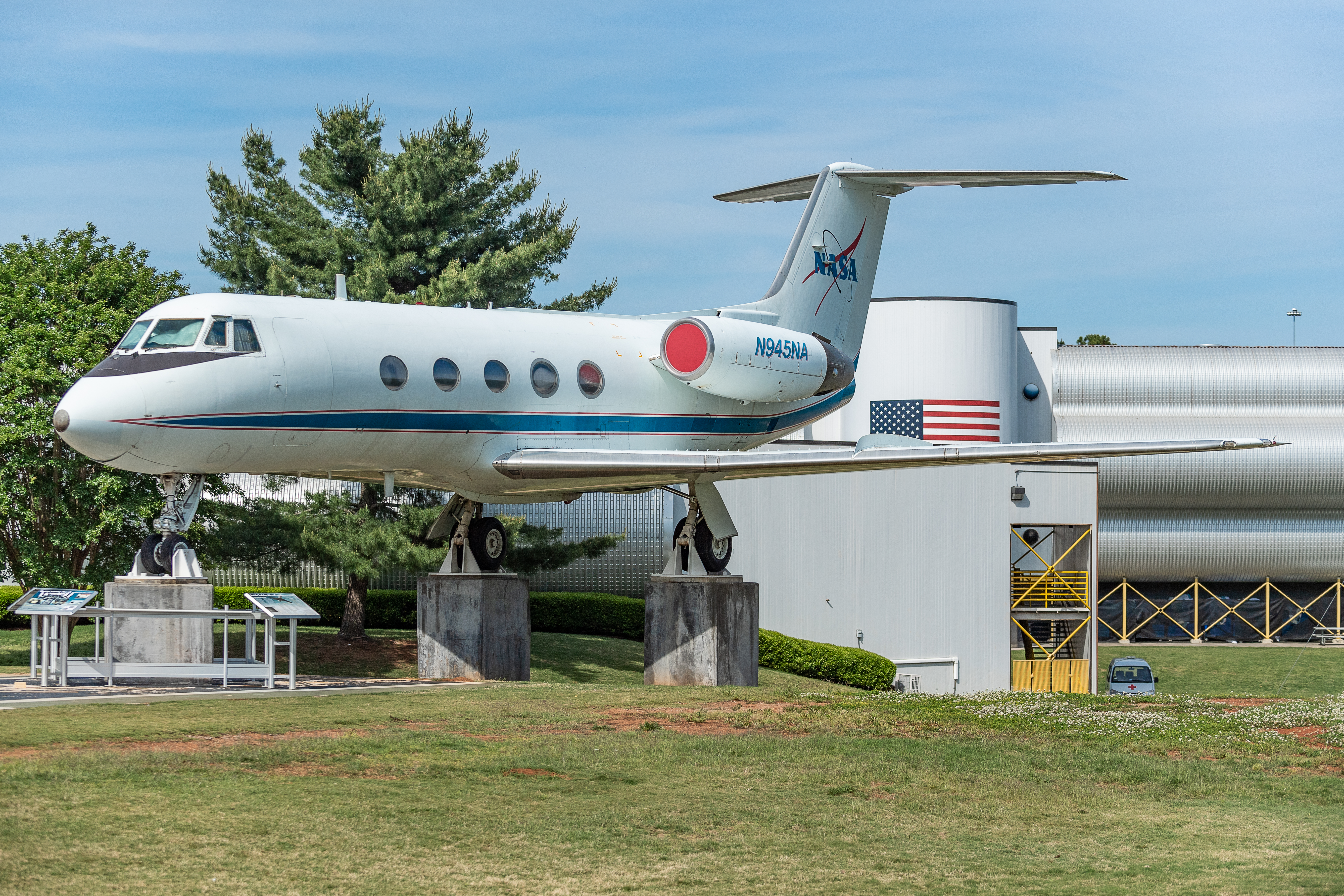
To meet a critical Space Shuttle program requirement, NASA extensively modified six Gulfstream II C-11 aircraft to allow Space Shuttle Astronauts to practice their Shuttle landing procedures. Since a Space Shuttle’s return from space allowed only one unpowered approach and landing, the astronauts needed repetitive practice landings in the Shuttle Training Aircraft (STA) to ensure safe landings at Kennedy Space Center, Edwards AFB, or White Sands, New Mexico. The STA’s exterior modifications included thrust reversers and up/down flaps designed to withstand higher than normal aerodynamic forces. The interior modifications to the left-hand cockpit position were designed to present a high-fidelity copy of the Space Shuttle’s instrumentation, controls, displays, and vantage points.
The training flight profiles were flown at White Sands Space Harbor, NM, or at the Kennedy Space Center, FL. Each Shuttle Commander and Pilot practiced approximately 1,000 landing profiles prior to launch. Each landing profile began at 37,000 ft (11,278 m) with significant configuration changes at 20,000 ft (6,096 m), and 12,000 ft (3,658 m). At seven miles (11 km) from touchdown, the STA was at 300 knots (345 mph or 556 kph) and 20-degree angle of descent. As the STA reached 1700 ft (5,182 m), the astronaut began “flaring” the aircraft for touchdown by pitching the nose upward. With the pilot’s eyes at 32 ft (10 m) above the runway and the STA’s wheels at 20 ft (6 m), the instructor pilot announced “touchdown.” This indicated that on a real mission, the main landing gear of the Space Shuttle Orbiter and would have touched the ground at that moment, even though the STA was still above the runway. The instructor then began a go-around to position the STA for its next training approach. The six STAs were also a supplemental source of high-altitude photography during launch, performed the critical task of weather condition assessment at the designated landing, site and served as a chase plane during the Orbiter’s approach and landing. STAs were used to transport astronaut crews between NASA facilities if T-38’s were not available and to support experimentation requirements. The original designers of the Gulfstream II could not have envisioned the variety of tasks that NASA accomplished with their original small transport aircraft.
History of STA N945, Serial Number 118:
Modified for NASA training in 1976, four STAs were normally based at NASA’s Forwarding Operating Location in El Paso, TX, near the White Sands Space Harbor, or at Ellington AFB, TX, near the Johnson Space Flight Center. Fifty-six Space Shuttle Astronauts flew STA N945, including the first Space Shuttle Commander, John Young; the first female Space Shuttle Pilot and Commander, Eileen Collins; the Commander of the first Shuttle-Mir docking mission, Robert “Hoot” Gibson; and the Pilot of STS-107, William McCool. After NASA retired the STAs in 2012, STA N945 was stored at the Birmingham-Shuttlesworth International Airport until it was reassembled here at the USSRC. Our STA was hoisted to its current display location in March 2017.

